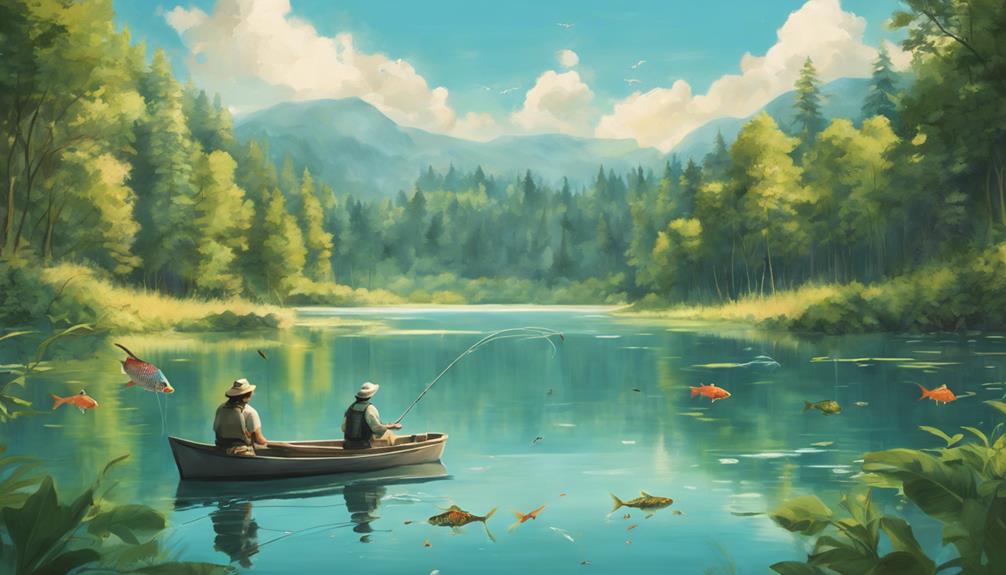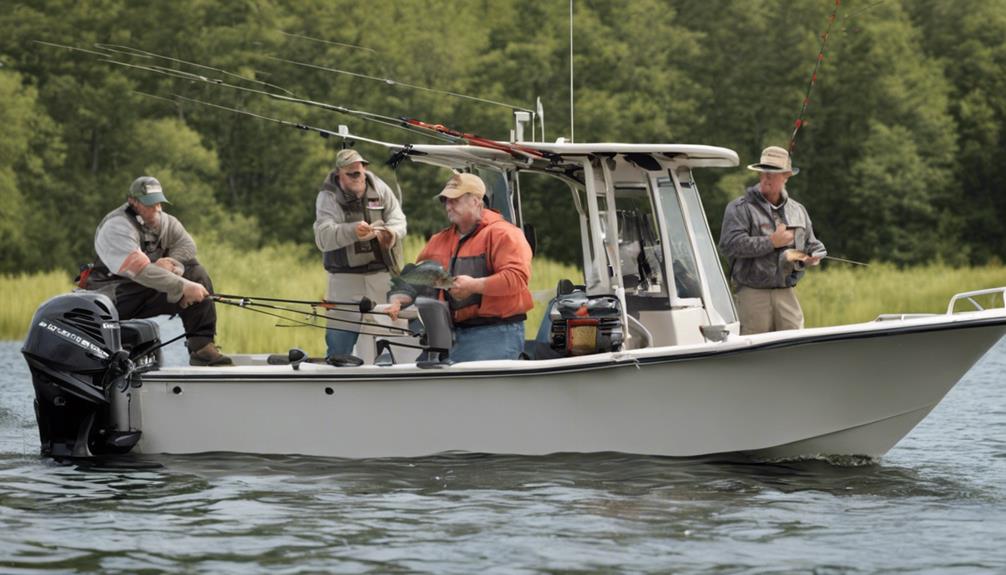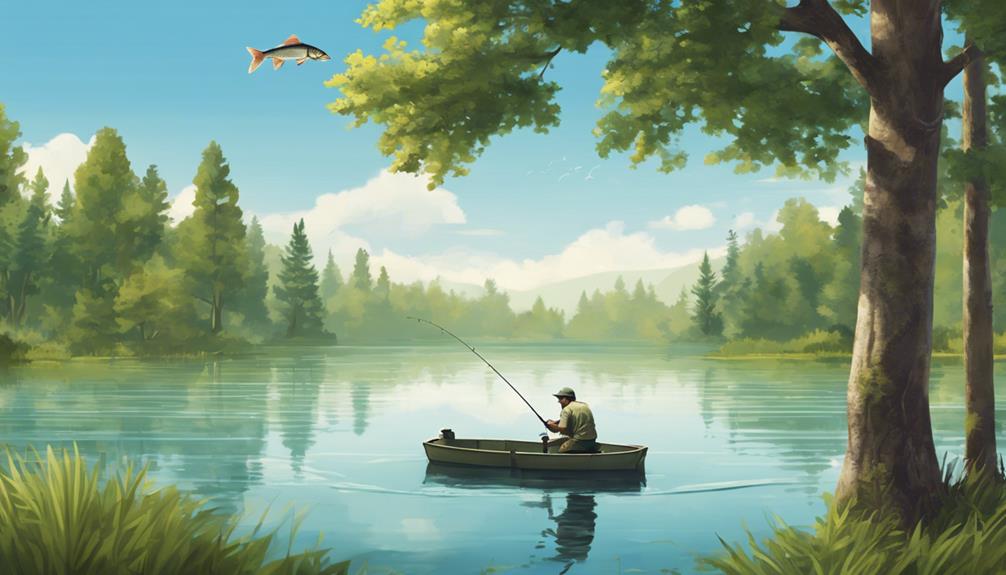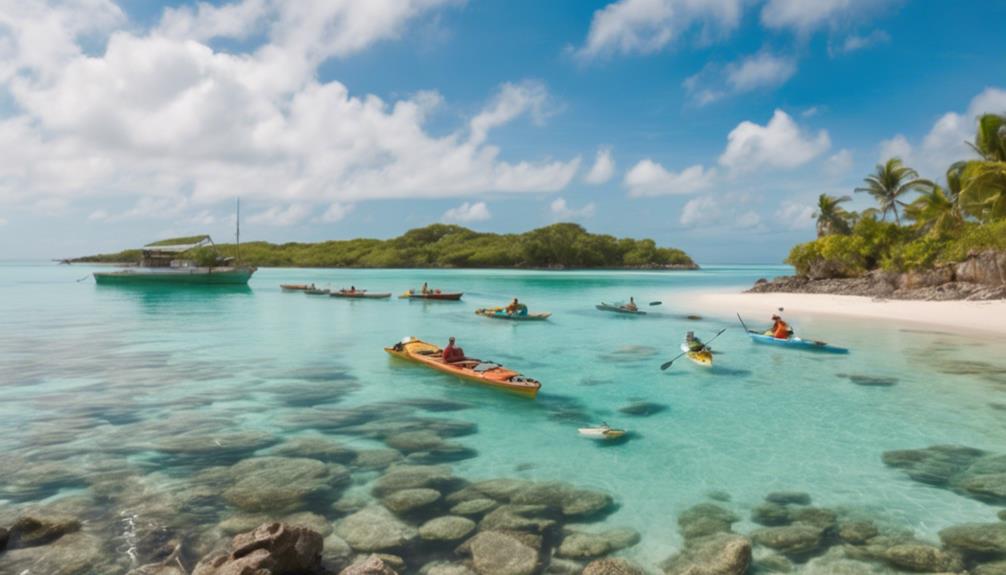You might think that fishing is just a harmless pastime, but did you know that there are crucial steps you can take to ensure the conservation and protection of fish species?
From practicing catch and release to advocating for policy changes, these eight best practices can make a significant difference in preserving our aquatic ecosystems.
By implementing these strategies, you not only contribute to the sustainability of fish populations but also play a vital role in safeguarding the future of our marine environments.
Importance of Catch and Release
Catch and release practices play a crucial role in preserving fish populations and promoting sustainable fishing practices. By releasing fish back into the water, you're directly contributing to maintaining healthy fish populations. Overfishing can lead to a significant decline in the number of fish in an area, disrupting the delicate balance of the ecosystem. When you catch a fish and release it, you're allowing it to continue its role in the ecosystem, whether as a predator or prey, thus helping to maintain the natural order of the environment.
Not only does catch and release help in preserving fish population numbers, but it also contributes to ecosystem balance. Fish play a vital role in the food chain, and their presence or absence can have far-reaching effects on other species within the ecosystem. By releasing fish you catch, you're ensuring that the ecosystem remains in harmony, with each species playing its part in the intricate web of life.
Selecting the Right Gear
To ensure successful and ethical fishing practices, it's essential to carefully select the appropriate gear for the specific type of fishing you plan to engage in. When choosing your gear, consider its environmental impact and sustainability. Opt for gear made from eco-friendly materials and avoid items that can harm marine life or the ecosystem. Proper gear maintenance and usage are crucial to minimize negative effects on the environment. Make sure to clean your gear after each use to prevent the introduction of invasive species to new habitats.
Select gear that aligns with the regulations and guidelines set by local authorities to promote sustainable fishing practices. By using gear that complies with these rules, you contribute to the conservation of fish populations and their habitats. Before purchasing any gear, research the best options that are both effective for fishing and environmentally friendly.
Remember that the gear you choose can have a significant impact on the success of your fishing trip and the overall health of the marine environment. By selecting the right gear and using it responsibly, you can enjoy your fishing experience while also helping to protect the species and ecosystems that make fishing possible.
Understanding Bag Limits
Understanding bag limits is essential for responsible fishing practices and conservation efforts. By adhering to these regulations, you contribute to conservation goals and help maintain healthy fish populations.
Here are some key points to consider when it comes to understanding bag limits:
- Know the Regulations: Familiarize yourself with the bag limits set by local authorities for different species of fish. These limits specify the maximum number of fish you're allowed to keep per day.
- Comply with Size Restrictions: In addition to bag limits, there are often size restrictions in place to protect juvenile fish and ensure the sustainability of the population. Always measure your catch to make sure they meet the minimum size requirements.
- Stay Informed: Bag limits can vary depending on the species, location, and time of year. Stay up to date with any changes in regulations to avoid unintentional violations.
- Report Violations: If you witness others exceeding bag limits or engaging in illegal fishing practices, report it to the appropriate authorities. By doing so, you play a role in enforcing conservation regulations and protecting the environment.
Understanding bag limits isn't just about following rules; it's a crucial part of being a responsible angler and contributing to the long-term health of fish populations and their habitats. By respecting bag limits and other regulations, you help ensure that future generations can also enjoy the thrill of fishing in abundant waters.
Participating in Habitat Restoration
Consider actively engaging in habitat restoration efforts to contribute to the preservation and enhancement of fish populations and their ecosystems. Participating in restoration projects can have a significant positive impact on the environment and the conservation of fish species. By involving yourself in these initiatives, you not only help restore critical habitats but also promote community involvement in conservation efforts.
Restoration projects play a crucial role in improving the environmental quality of aquatic ecosystems, which directly benefits fish populations. Your participation in habitat restoration can aid in the recovery of degraded habitats, creating healthier environments for fish to thrive. Additionally, engaging in these projects can enhance biodiversity, ultimately contributing to the overall sustainability of aquatic ecosystems.
Furthermore, your involvement in habitat restoration projects can lead to long-lasting environmental impact and foster a greater understanding of the importance of conservation efforts. By actively participating in these initiatives, you become a vital part of the conservation community, working towards the preservation of fish species and their habitats.
Supporting Sustainable Practices
By implementing sustainable practices, you can play a crucial role in promoting the long-term health and stability of fish populations and their ecosystems. To support sustainable practices in fishing conservation, consider the following:
- Practice Eco-Friendly Angling: Opt for non-toxic fishing gear to prevent harmful chemicals from leaching into the water. Use biodegradable bait and properly dispose of any trash or fishing line to minimize environmental impact.
- Adopt Responsible Harvesting Techniques: Avoid overfishing by adhering to catch limits and size regulations. Release undersized or protected species with care to ensure their survival. Selective harvesting can help maintain a balanced ecosystem.
- Engage in Catch and Release: When possible, release fish back into the water unharmed. Handle fish with wet hands to protect their slime layer, and use barbless hooks for easier and less damaging hook removal.
- Support Conservation Organizations: Contribute to or volunteer with conservation groups dedicated to preserving aquatic habitats and fish populations. Stay informed about local conservation efforts and spread awareness within your community.
Educating Others on Conservation
To further advance fishing conservation efforts, educating others on the importance of sustainable practices and ecosystem preservation is key. Raising awareness within communities about the fragile balance of marine ecosystems and the impact of overfishing is crucial for long-term conservation. By engaging in community outreach programs, you can spread knowledge about sustainable fishing practices and the significance of protecting various species.
One effective way to educate others on conservation is to organize workshops or seminars focused on sustainable fishing techniques and the importance of respecting catch limits. These events provide a platform for sharing valuable information and fostering a sense of responsibility towards marine environments. Encouraging discussions on topics such as catch-and-release practices, habitat preservation, and the effects of pollution can help individuals understand their role in protecting aquatic ecosystems.
In addition to organized events, utilizing social media platforms and online resources can significantly amplify your message. By sharing educational content, infographics, and success stories of conservation efforts, you can reach a broader audience and inspire more people to get involved. Collaborating with local schools, environmental organizations, and government agencies can also enhance community outreach efforts and create a network of individuals dedicated to fishing conservation.
Reporting Invasive Species
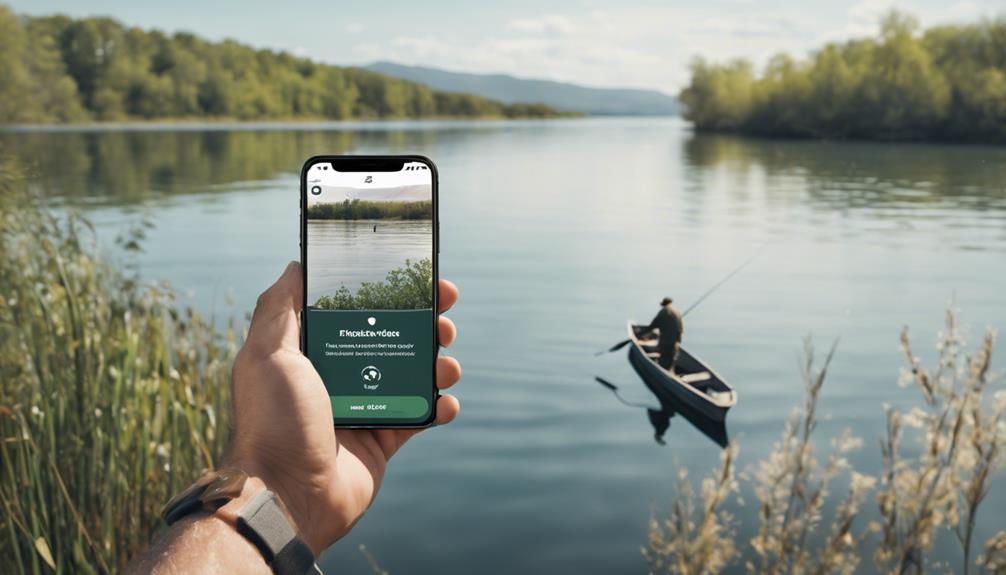
When encountering invasive species while fishing, promptly report them to relevant authorities for immediate action. Invasive species can have detrimental effects on native ecosystems and species, making early detection crucial for effective invasive species management. By reporting invasive species sightings, you play a vital role in helping authorities take necessary steps to prevent further spread and protect the local environment.
Here are some important steps to follow when reporting invasive species:
- Document the Species: Take clear photos of the invasive species, noting any distinctive features that can help with identification.
- Note the Location: Provide precise details about where the invasive species was spotted, including GPS coordinates if possible.
- Contact the Authorities: Reach out to local wildlife agencies, conservation organizations, or invasive species hotlines to report your findings.
- Follow Up: Stay informed about the actions taken by authorities in response to your report, and be willing to provide additional information if needed.
Advocating for Policy Changes
When advocating for policy changes related to fishing conservation, engaging with local lawmakers and decision-makers is essential to drive meaningful impact and ensure the long-term sustainability of our marine ecosystems. Policy reform plays a crucial role in establishing guidelines that protect marine wildlife and promote sustainable fishing practices. By advocating for policy changes that prioritize wildlife preservation, you can contribute to the conservation of fish species and the overall health of our oceans.
To effectively advocate for policy reform, it's important to stay informed about current regulations and identify areas where improvements are needed. By participating in public consultations, contacting your representatives, and joining conservation organizations, you can make your voice heard and influence decision-making processes. Emphasizing the importance of wildlife preservation in discussions with policymakers can lead to the implementation of measures that safeguard vulnerable species and habitats.
Collaborating with like-minded individuals and organizations can amplify your advocacy efforts and increase the likelihood of policy changes that benefit fishing conservation. By forming partnerships with conservation groups, engaging in grassroots campaigns, and utilizing social media to raise awareness, you can mobilize support for initiatives that promote sustainable fishing practices and protect marine ecosystems for future generations. Remember, your advocacy for policy reform is a powerful tool in safeguarding the biodiversity and resilience of our oceans.
Frequently Asked Questions
What Are Some Common Misconceptions About Catch and Release Fishing?
When you think about catch and release fishing, remember that not all fish survive after being released. People debate the ethics of this practice, but proper handling techniques can improve survival rates.
Despite the conservation benefits, some common misconceptions include believing that all fish released will live and that catch and release is always harmless. Understanding the nuances of this method can help protect fish populations while enjoying the sport responsibly.
How Can Fishermen Minimize Their Impact on Fish Populations When Selecting Gear?
When selecting gear for fishing, you can minimize your impact on fish populations by choosing options that are sustainable and environmentally friendly.
Gear selection plays a crucial role in impact reduction as certain types of gear can cause more harm to fish populations than others.
What Role Do Bag Limits Play in Protecting Fish Populations?
Bag limits are crucial in protecting fish populations. They're a key component of fishing regulations aimed at conservation efforts. By setting limits on the number and size of fish that can be caught, sustainable practices are promoted.
This helps ensure that fish populations are maintained at healthy levels, contributing to effective population management. Following bag limits is essential for preserving fish stocks and supporting long-term sustainability in fisheries.
How Can Individuals Get Involved in Habitat Restoration Projects?
To get involved in habitat restoration projects, you can join community efforts and take part in volunteer opportunities. By participating in these projects, you contribute to environmental stewardship and conservation efforts.
Help restore habitats by planting trees, cleaning up beaches, or monitoring wildlife populations. Your involvement can make a meaningful impact on preserving ecosystems and protecting wildlife for future generations to enjoy.
What Are Some Examples of Sustainable Fishing Practices That Individuals Can Support?
When it comes to supporting sustainable fishing practices, you can make a big difference. By choosing seafood from community supported fisheries or marine protected areas, you help protect marine ecosystems.
Opt for sustainable seafood options and practice responsible consumption. Your choices can promote healthy fish populations and contribute to the conservation of our oceans.
Your support for these practices can have a positive impact on the environment and help ensure a better future for marine life.
Conclusion
Now that you know the best practices for fishing conservation and species protection, it's time to put them into action.
By practicing catch and release, using the right gear, and supporting sustainable practices, you can help preserve our oceans and waterways for future generations.
Remember to educate others, report invasive species, and advocate for policy changes to make a real impact on the health of our aquatic ecosystems.
Every small effort counts towards a more sustainable fishing future.
